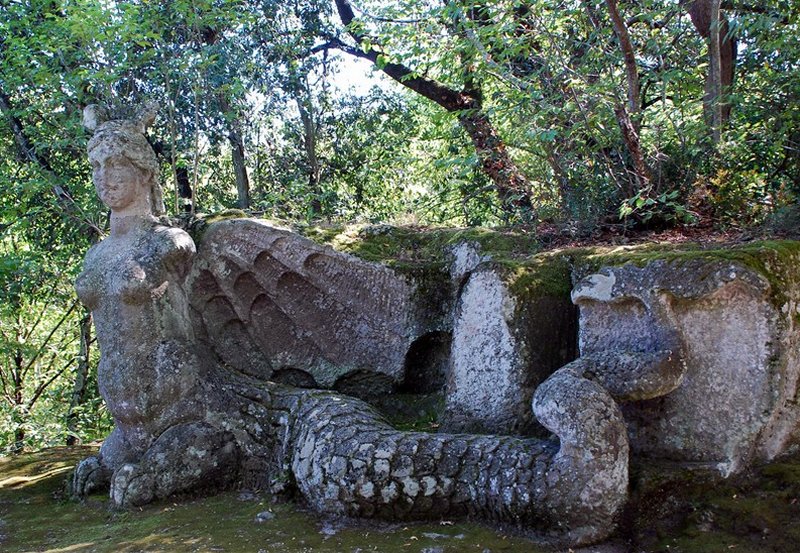Echidna – Mother Of All Monsters – A Cave-Dwelling Female Hybrid Creature In Greek Mythology
A. Sutherland - AncientPages.com - In Graeco-Roman tradition, the Echidna is a gigantic half-woman and half-snake hybrid creature. As a tall, full of charm, and beautiful woman from the waist below, she was a hideous serpent.
Echidna. Parco dei Mostri - Bomarzo, Italy. Image credit: Daderot – Public Domain
In other words, Echidna—described by Hesiod as an 'impossible monster'—is a remarkable creature and the mother of a pantheon of spirits with a fierce temperament. These spirits, among many other monstrous spirits, represented dark forces. These forces were created in the earliest times of the violent wars conducted by the gods. Some of these creatures survived the conflicts and continued to haunt and seriously endanger humans.
Echidna was an offspring of the primal gods Gaia and Tartarus (or Chrysaor and Callirhoe). Echidna never aged, but she was not immortal. She was a proud mother of many terrifying children with her brother and husband, Typhoon. She represented the corruption of the earth, decay, and disease.
One of them was Hydra, and others like Cerberus (Kérberos), the two-headed hound Orthos, who guarded Geryon's cattle and was killed by Heracles, the goat/lion/serpent Chimera, the Nemean Lion, the Sphinx, and the Eagle that ate Prometheus's liver.
Yet another extraordinary and frightening child of hers was the Griffin Vulture, a monstrous bird from Graeco-Roman mythology, and most probably Ladon, the many-headed, watchful, dragon-like serpent that guarded the Golden Apples of the Hesperides, the sacred garden.
The daughter of an Echidna, Hydra. Image credit: Yellow.Cat from Roma, Italy - CC BY 2.0
According to Pindar (Pindarus), c. 518 - 438 BC, an ancient Greek lyric poet from Thebes, Echidna gnawed into the light from her mother's womb. She lived in a cavern close to the land of Scythia, and usually, she emerged, showing only her human parts to attract human males. Once she had captured her victims, she would quickly embrace them in her serpentine coils and consume them.
According to Herodotus, Greeks living in Pontus, a region on the southern coast of the Black Sea, told a story of an encounter between Heracles, the son of Zeus and a divine hero in Greek mythology, and this snaky female creature. Heracles drove Geryones' cattle through the area, which would later become Scythia. One morning, he awoke and discovered that his horses had vanished. While searching for them, he "found a creature of double form in a cave that was half maiden and half serpent."
She had the horses and promised to return them if Heracles would have sex with her. Heracles agreed, and she had three sons with him: Agathyrsus, Gelonus, and Scythes. She asked Heracles what she should do with his sons: "shall I keep them here (since I am the queen of this country), or shall I send them away to you?"
Heracles gave her a bow and belt and told her that when the boys were grown, whoever would draw the bow and wear the belt would keep him and banish the others. The youngest son, Scythes, fulfilled the requirements and became the founder of the Scythians.
Death Of Echidna
Many versions of the myths are associated with Echidna, known as the "mother of all monsters." One says Hercules, Bellerophon, or Oedipus killed her. According to another, she was strangled in her sleep by Argos Panoptes, a giant with a hundred (or three hundred) eyes who was Hera's servant.
Credit: MalchevAdobe Stock -
The killing of the serpent-legged monster Echidna as she slept in her cave was believed to be Argos' Great achievement for the Olympian pantheon.
According to another story, Echidna was immortal. Zeus left her on earth after the victory over the Titans so that she and her descendants could later challenge heroes, according to Hesiod ('he, who emits the voice'), an ancient Greek poet who flourished c. 700 BC.
Most myths and legends about Echidna do not focus on her but on her famous and horrible monster children.
As told in the Iliad, the hero Bellerophon was ordered by the king of Lycia to kill the Chimera. The truth is that the king wanted Bellerophon to kill rather than the Chimera, but the hero, whom the gods miraculously protected, succeeded in killing Echidna's monster-child, Chimera, whom Bellerophon shot with an arrow.
Written by – A. Sutherland - AncientPages.com Senior Staff Writer
Updated on March 28, 2024
Copyright © AncientPages.com All rights reserved. This material may not be published, broadcast, rewritten or redistributed in whole or part without the express written permission of AncientPages.com
Expand for referencesReferences:
Goldstein J. 101 Amazing Mythical Beasts
Routledge, Handbook of Greek Mythology
Bane T. Encyclopedia of Beasts and Monsters in Myth, Legend and Folklore
More From Ancient Pages
-
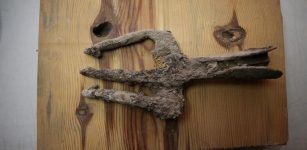 1700-Year-Old Iron Trident Found In The Ancient City Of Assos, Turkey
Archaeology | Nov 1, 2023
1700-Year-Old Iron Trident Found In The Ancient City Of Assos, Turkey
Archaeology | Nov 1, 2023 -
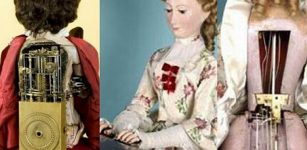 Ancient Quest For Mechanical Life: Humanoid Robots Of Our Ancestors
Ancient Technology | Apr 26, 2019
Ancient Quest For Mechanical Life: Humanoid Robots Of Our Ancestors
Ancient Technology | Apr 26, 2019 -
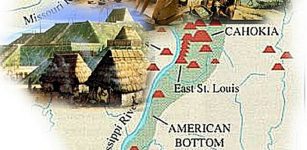 Unsolved Mysteries Of Cahokia – What Really Happened With The Large Metropolis?
Civilizations | Jan 15, 2015
Unsolved Mysteries Of Cahokia – What Really Happened With The Large Metropolis?
Civilizations | Jan 15, 2015 -
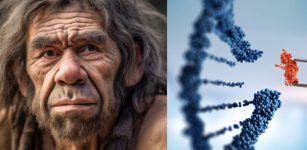 People Who Carry Neanderthal Gene Variants Have Greater Pain Sensitivity
DNA | Oct 11, 2023
People Who Carry Neanderthal Gene Variants Have Greater Pain Sensitivity
DNA | Oct 11, 2023 -
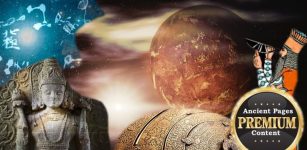 Secret Ancient Knowledge Of Venus – Controversial Theory And Surprising Discovery – Part 1
Ancient Mysteries | Jun 30, 2018
Secret Ancient Knowledge Of Venus – Controversial Theory And Surprising Discovery – Part 1
Ancient Mysteries | Jun 30, 2018 -
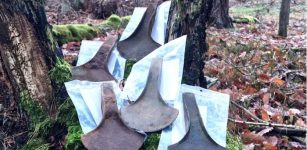 Five Rare Bronze Age Axe Heads Found In Polish Forest
Archaeology | Dec 8, 2023
Five Rare Bronze Age Axe Heads Found In Polish Forest
Archaeology | Dec 8, 2023 -
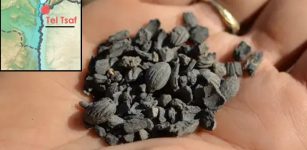 Ancient Cotton Fibers Dating Back 7,000 Years Discovered In NE Israel
Archaeology | Dec 19, 2022
Ancient Cotton Fibers Dating Back 7,000 Years Discovered In NE Israel
Archaeology | Dec 19, 2022 -
 Crimean Atlantis: Remarkable Ancient Underwater City Of Akra
Featured Stories | Mar 6, 2017
Crimean Atlantis: Remarkable Ancient Underwater City Of Akra
Featured Stories | Mar 6, 2017 -
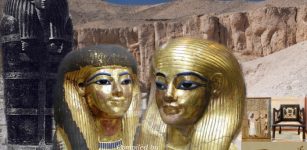 Amazing Tomb Of Yuya And Tjuyu Filled With Ancient Treasures In The Valley Of The Kings
Featured Stories | Jun 2, 2021
Amazing Tomb Of Yuya And Tjuyu Filled With Ancient Treasures In The Valley Of The Kings
Featured Stories | Jun 2, 2021 -
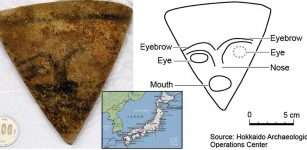 Jomon Period: Triangle-Shaped Stone Artifact Depicting Human Face Found For The First Time In Japan
Archaeology | Dec 25, 2017
Jomon Period: Triangle-Shaped Stone Artifact Depicting Human Face Found For The First Time In Japan
Archaeology | Dec 25, 2017 -
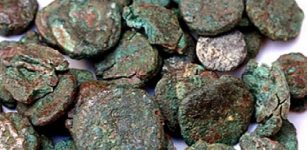 Thousands Of Ignored ‘Nummi Minimi’ Coins Found In Ancient Marea, Egypt With Hidden Fascinating History
Archaeology | Dec 10, 2023
Thousands Of Ignored ‘Nummi Minimi’ Coins Found In Ancient Marea, Egypt With Hidden Fascinating History
Archaeology | Dec 10, 2023 -
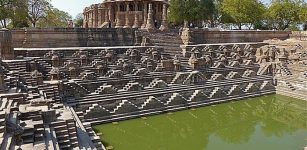 Ancient Stepwells Of India: Symbol Of Sacred Water And Boundary Between Heaven And Earth
Civilizations | Jan 11, 2019
Ancient Stepwells Of India: Symbol Of Sacred Water And Boundary Between Heaven And Earth
Civilizations | Jan 11, 2019 -
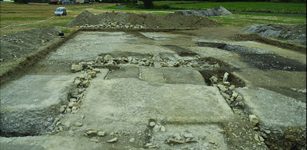 Stone Homes Of Europe’s First Megalithic Builders Discovered
Archaeology | Feb 22, 2023
Stone Homes Of Europe’s First Megalithic Builders Discovered
Archaeology | Feb 22, 2023 -
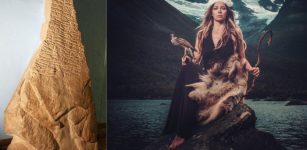 How Did Vikings Worship Their Gods?
Ancient History Facts | May 25, 2016
How Did Vikings Worship Their Gods?
Ancient History Facts | May 25, 2016 -
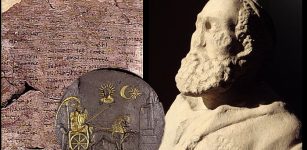 Lost Ancient Greco-Bactrian Kingdom Of 1,000 Cities
Civilizations | Apr 23, 2016
Lost Ancient Greco-Bactrian Kingdom Of 1,000 Cities
Civilizations | Apr 23, 2016 -
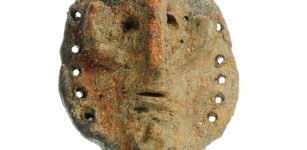 Unique Ancient Figurine Puzzles Scientists – Was She An Unknown Pre-Historic Water Goddess?
Archaeology | Jul 21, 2022
Unique Ancient Figurine Puzzles Scientists – Was She An Unknown Pre-Historic Water Goddess?
Archaeology | Jul 21, 2022 -
 How Many Ice Ages Has The Earth Had, And Could Humans Live Through One?
Featured Stories | Sep 26, 2022
How Many Ice Ages Has The Earth Had, And Could Humans Live Through One?
Featured Stories | Sep 26, 2022 -
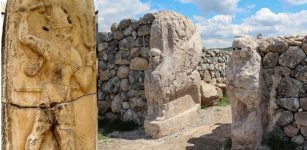 Drought Accelerated Hittite Empire Collapse – New Study Suggests
Archaeology | Feb 12, 2023
Drought Accelerated Hittite Empire Collapse – New Study Suggests
Archaeology | Feb 12, 2023 -
 Unexplained Sightings Of An Unknown Parallel World – Did He Stumble Upon An Interdimensional Portal?
Featured Stories | Aug 3, 2021
Unexplained Sightings Of An Unknown Parallel World – Did He Stumble Upon An Interdimensional Portal?
Featured Stories | Aug 3, 2021 -
 On This Day In History: ‘Sue’ Largest Tyrannosaurus Rex Skeleton Discovered In South Dakota – On August 12, 1990
News | Aug 12, 2016
On This Day In History: ‘Sue’ Largest Tyrannosaurus Rex Skeleton Discovered In South Dakota – On August 12, 1990
News | Aug 12, 2016


